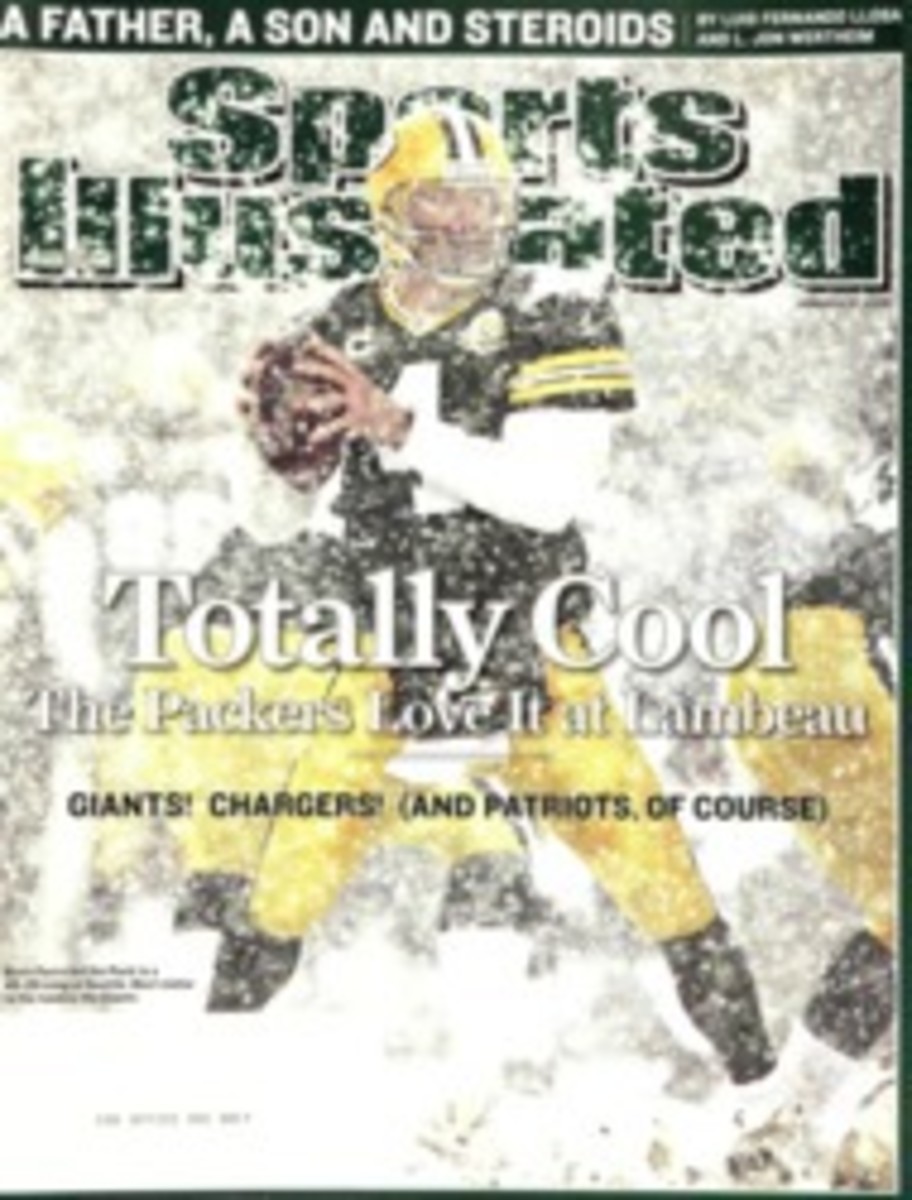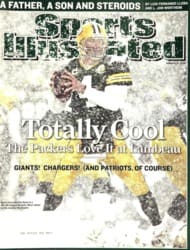
Reef Madness
JAN. 4, 2008. It came from the North, a banshee of a storm with the soul of a Category 5 hurricane, bringing the West Coast gale winds and flash floods and mud slides; toppling power lines and flipping 18-wheelers; shutting airports, hurling trees across roads and burying ski resorts under 10 feet of snow; killing at least 11 people. And that was only what happened on land. ¬∂ At sea the collision of multiple cold fronts and subtropical moisture whipped the northern Pacific into a rampaging fury that hadn't been seen in years. Harbors were closed from British Columbia to Baja; high-surf warnings were issued. The Coast Guard hoisted its storm flag, signifying peril to anyone who ventured into the ocean—and under these conditions you'd think it was the last place a person would want to be. Mike Parsons, 42, Brad Gerlach, 41, Grant Baker, 34, and Greg Long, 24, however, had a different idea. Ranked among the world's top big-wave surfers, the four men, along with photographers Rob Brown, 49, and Matt Wybenga, 31, chose their ideal spot in the storm's wake: 100 miles west of San Diego at a seamount known as the Cortes Bank, surrounded by breaking 80-foot waves.
For the elite group of surfers who roam the world chasing these giants, ferocious weather creates the opportunity to find them. The last decade has brought many refinements to tow surfing, a technique pioneered by famed surfer Laird Hamilton that deploys Jet Skis to catch waves too massive for paddling. Hamilton, Parsons and others have ridden 70-foot faces, and most surfers believe that a 100-foot wave is next. "We just need Mother Nature to send it," said Long last Thursday. With this storm, it looked as though maybe she had.
Loading a Jet Ski onto Brown's 36-foot powerboat in Dana Point, Calif., at 7 a.m. on Jan. 5, the men pounded through heavy chop for six hours and took turns piloting a second Jet Ski alongside the boat because conditions were too rough to tow it. Although Parsons and Gerlach had been the first to tow into Cortes (in 2001), and Brown had made this trip nine times before, no one knew what they'd find out there. Cortes is a spooky, capricious place; a steep 17-mile-long underwater mountain range that rises 5,000 feet from the ocean floor to within six feet of the surface in spots. Add a mix of variables—wind direction, swell heights, wave intervals, atmospheric pressure—and the picture becomes more complex. Wave forecasting guru Sean Collins, whose Surfline website counts the Navy SEALs and the National Weather Service among its clients, predicted a small window during which the storm winds would weaken enough for the behemoth waves to be ridden. But he offered no guarantees. "If the next front had arrived a couple hours earlier," he said, "the trip would've been complete hell."
The cold front cooperated. And for the surfers, Cortes Bank turned out to be a kind of turbulent heaven.
"The ocean was just alive," Parsons said, describing the scene that greeted them. "The amount of chaos going on over that reef was amazing. There was probably a mile and a half of white water."
"I'd never seen anything like it in my life," Brown agreed, describing sets that were "out-of-this-world big." That was the good news. The bad news, of course, was that epic conditions meant epic danger.
For big-wave surfers there's never any shortage of things to worry about, even on average days. There's the obvious trauma of falling, which Hawaiian surfer Brett Lickle has described as akin to "sprinting 500 yards holding your breath while being beaten by five Mike Tysons." A wipeout can result in anything from an unpleasant rag-doll tumble, to death. During a huge swell last month, Gerlach, Parsons and Long were riding 60-foot faces at a treacherous wave called Ghost Trees that breaks near the 7th hole at Pebble Beach, when surfer Peter Davi was dashed against the rocks and drowned. On a big day at Cortes there's the heightened risk of being so far offshore in such an exposed place, coupled with an even scarier consideration: If you fell and were washed into the acres of churning white water that made up the impact zone, Parsons said, "you could easily be lost forever."
With that in mind, the surfers were cautious as they approached the reef. "Waves were refracting and coming from the opposite direction, hitting together and jacking up," recalled Parsons. "We looked at each other like, Oh, wait a minute. We better reevaluate this." Gerlach, battling seasickness and equipment problems, was especially wary. "My first wave of the day was a very, very big one," he said. "I was bouncing around so much that I got bucked out of my [foot] straps." As the afternoon progressed, they rode the best waves of their lives in what amounted to a private session with the ocean at the top of her game, but the edge was never far away. And they knew it.
"I felt the thing growing behind me," Long said, describing one monster that he caught. "You have to outrun it. The lip broke, and I was completely engulfed in white water. When I came out the other end my heart was in my throat. I was literally shaking with excitement. I just looked at Grant and gave him the sign: That was my last wave. I'm not going to get a bigger one. I'm not."
"Waves are not measured in feet and inches, they are measured in increments of fear."
—Big-wave surfer Buzzy Trent, 1929--2006
If you fell and were washed into the acres of churning white water that made up the impact zone, "you could easily BE LOST FOREVER."
PHOTO
Photograph by RobertBrownPhotography.com/Surfline.com
BREAK OF A LIFETIME After a grueling trip to Cortes, Parsons rode the day's biggest wave, an estimated 75-footer.
PHOTO
Photograph by RobertBrownPhotography.com/Surfline.com
SHOCK AND AWE In addition to his epic ride, Parsons survived one wipeout that plunged him "half a football field underwater."

